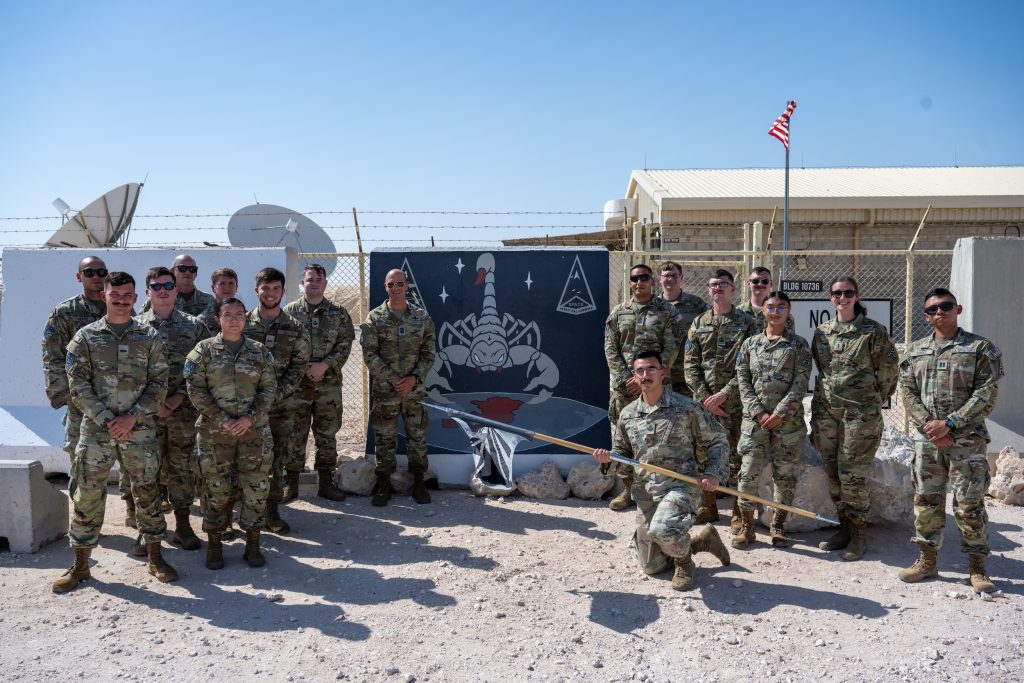How the Space Force prepares its personnel to train and fight wars continues to evolve, the service’s top enlisted Guardian said recently.
The service is working on multiple significant personnel changes at once, Chief Master Sergeant of the Space Force John F. Bentivegna said in a telephone interview with Air & Space Forces Magazine during a recent trip to the Middle East, during which he visited roughly 60 deployed Guardians in U.S. Central Command.
The Space Force’s new model of presenting forces, billed by service leaders as one of the most fundamental changes in the service’s history, is known as SPAFORGEN and is now in the process of being fully implemented two years after its introduction. But while the Space Force now knows how it wants to present forces in the future and what missions it will conduct, the personnel that make up those forces still face some outstanding questions.
“Other services and the Space Force, identifying missions that we’re going to transfer over, for the most part that’s all done,” Bentivegna said.
However, it remains to be seen exactly which space-focused service members now outside the service will ultimately join the fold as Guardians.
“That’s kind of an unknown we’re working through right now,” Bentivegna said. “In almost my entire career executing space operations, I don’t think there has been a mission I’ve ever done that didn’t have a total force integration perspective where I was either working with the Reserve or the Guard.”
Some space-focused Air Force Reserve personnel can already apply for transfer to the USSF under the Personnel Management Act, a provision of last year’s authorization bill.
“We’re in the process right now of offering opportunities to those Reservists today,” Bentivegna said of roughly 370 positions that are eligible to transfer. “The first tranche that’s open right now is asking when they want to come over full-time. So the unknown right now is how many of those individuals, that talent, is expressing interest to come over and join the Space Force full time. … The first selection board will happen here in the beginning of the fall. We will kind of see how that goes.”
But for those who want to be part-time service members, things are still in flux.
“A lot of part-time talent we have, we haven’t asked them to join yet because we’re still trying to work through what part-time means in the systems, updating systems and policies to do that,” he said. “We’ll continue to leverage the normal relationship as it exists today. So that’s a little bit of a variable as we’re kind of working through that.”
Air National Guardsmen may transition to the Space Force under a Department of the Air Force-supported legislative proposal included in some versions of the 2025 National Defense Authorization bill under consideration. The idea has met some resistance from some lawmakers.
For now, the CMSSF said the Space Force will “wait and see what happens” to Air National Guard personnel.
“They offer not only kit—systems—but also the talent as well,” Bentivegna said. “And we’re waiting to see where Congress decides to give us some kind of direction one way or the other.”
Even when it comes to full-time Guardians already in the service, Space Force is still maturing into its own organization. One of the USSF units deployed to U.S. Central Command is the 5th Space Warning Squadron Detachment 2. Their mission, using a system known as JTAGS, was conducted by the Army for nearly two decades before it became a Space Force mission in 2023. But up until a few months ago, Soldiers were still deployed in that Space Force unit as service members cycled in and out based on their deployment schedules.

“There’s the generic, here’s how the how the mission is evolving,” Bentivegna, on his first visit to CENTCOM as CMSSF, said.
Then there is SPAFORGEN, a deployment model the service says is designed to best staff those missions. SPAFORGEN, Bentivegna explained, is designed so “all of the units that are presented across the service components and combatant commands, all kind of synchronized onto one rotation.”
While SPAFORGEN is applicable across the service, it is mainly designed to give so-called employed-in-place forces more training time, which the Space Force says is a must in the face of increasingly complex and realistic threats posed by China, Russia, and other possible adversaries. Units have three phases—prepare, ready, and commit—and one entire cycle will last six months. “Combat squadrons” will be the main “units of action” the Space Force presents to combatant commanders, with “combat detachments” as deployable units.
“Deployable forces, it’s more of a natural cycle where you go downrange for six months at a time,” Bentivegna said, after which Guardians can take leave, develop in their careers, and train to deploy again. “It’s the employed-in-place who have the greatest impact [from SPAFORGEN], by giving them the space they need in the prepare and ready phases of SPAFORGEN to kind of take them away from being warfighters on a day-to-day basis, allow them to hone their skills, and do the advanced training.”
The service-wide synchronization happened at the beginning of this month, when employed-in-place Guardians started their commit phases on July 1.
For now, things are going well, Bentivegna said. “Feedback from the very initial stages was really positive,” he said. “But we’re going to continue to collect data throughout the entire cycle to see what other changes, if any, need to be made.”
Bentivegna praised Guardians for taking on the challenges inherent to setting up a new service—at home and deployed.
“You can hear the planes flying overhead. You can see the planes on the tarmac,” Bentivegna said. “We’re asking them to be masters of the domain that they’re never going to touch, never going to feel, never really going to experience, which is kind of a unique challenge for a warfighter. But they’re doing a phenomenal job of embracing that.”